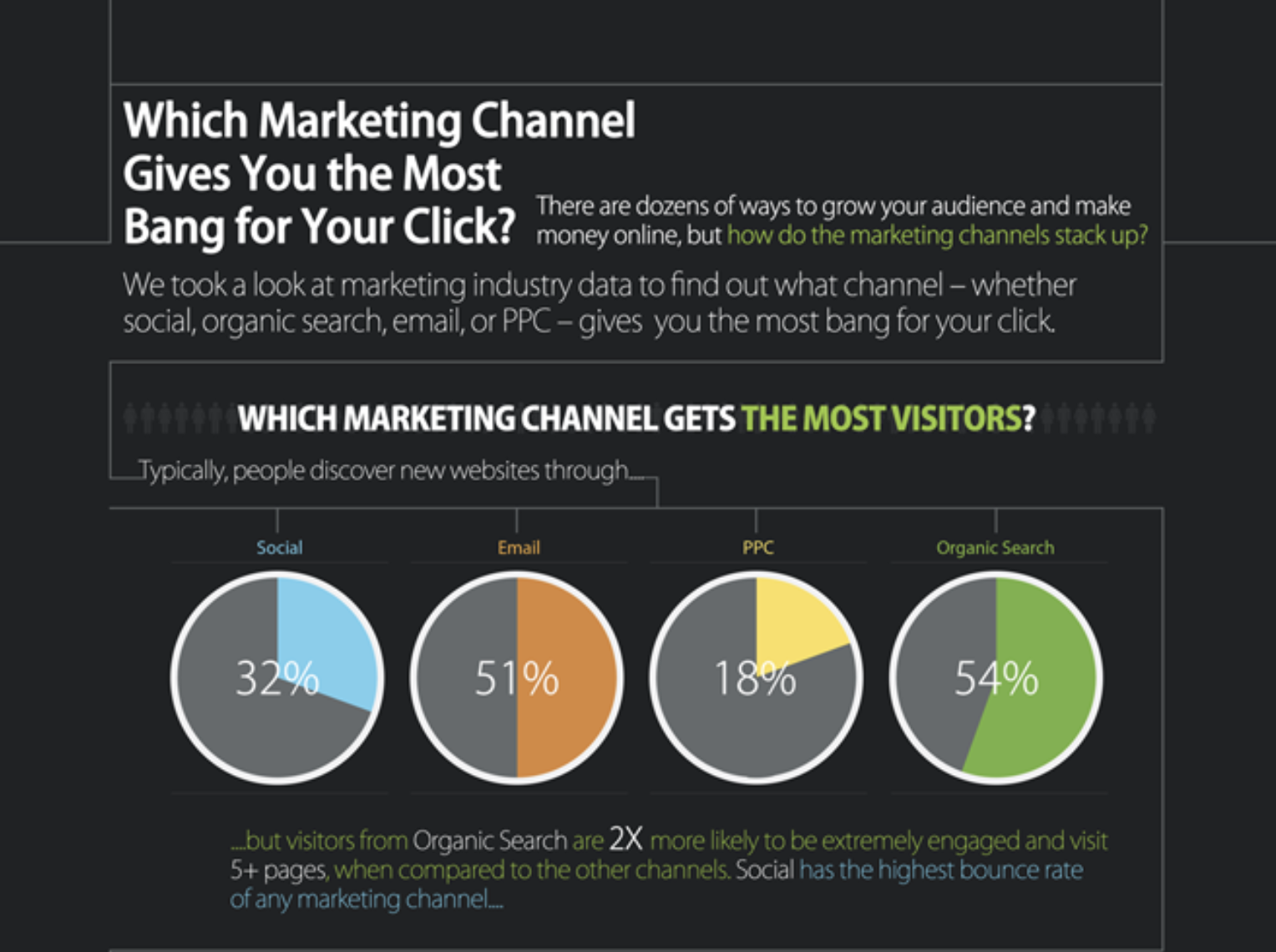The SEO marketing domain is constantly getting revamped with Google constantly introducing new updates in its algorithms. With updates like Panda and Penguin floating around us, it can be challenging to cheat the system and keep pace with the ever-changing trends. Yet, knowing how these trends can affect your shop can help you tweak your SEO strategies to drive qualified traffic to your site.
In the SEO world, small changes can have a big impact on your business. Therefore, I am going to share with you the hottest trends in the SEO marketing domain and how you can embrace them to dominate the SERPs and drive business revenue. Ready? Let’s go!
1. Blockchain Will Take the SEO World by Storm
No! This article isn’t about cryptocurrencies and bitcoins. Blockchain technology has more to it. In the digital marketing landscape, authoritative sites, namely Google and Facebook act as the middlemen, connecting consumers, search engines, advertisers, and brand websites and helping them trust each other. In the process, these intermediary sites earn their profits.
In the SEO world, Blockchain can offer a transparent interface between the persons involved, thereby reducing PPC advertising frauds and fostering trust between the parties. Organizations adopting this technology will have to integrate it within their website. Thus, if I research on a product, the technology will enable me to find online product reviews and access the corresponding blockchain ledger records, indicating that the reviews are from a legitimate user and IP address (not a bot).
Here’s how this disruptive technology will affect the SEO world.
- Advertisers can directly connect with websites and consumers
- Improved transparency in the online advertising world. For instance, it will ensure that website housing the ad charges as per the actual CTR.
- Verify the contracts between advertisers and websites
- Advertisements will be less intrusive and more effective
2. Spoken Queries Will Gain Significance
‘Ok Google!’ and ‘Hey Siri!’ are more than just trends; they are becoming a way of life! Thanks to the advancements in voice technology, voice search has gained mileage, disrupting the way people look for products, services, or solutions to their daily issues. According to this infographic, by 2020, more than half of the overall online traffic will come from voice search.

Owing to its swelling popularity, search engines like Google are placing a huge emphasis on voice engine optimization. Thus, most business owners are investing their time and effort in voice engine optimization, enabling them to stay ahead of the competition. This graphical representation by Think with Google shows what voice-activated speaker owners expect when looking for a product or service.

As a business owner, your ultimate goal should be to make it easy for your audience to find your brand. Here’s how you can optimize your website for voice searches.
- Speed Up Your Site
Google recommends a site speed of less than 2-3 seconds. Anything more than that and your audience will exit your page. Make sure your website is responsive, allowing the pages to load quickly. Optimize images, compress files, and use web caching to boost your site’s speed.
- Prioritize Long-Tail Keywords
Voice search SEO is different from traditional search. For instance, users looking for an online digital marketing course will type phrases like, ‘top online digital marketing courses’ or ‘digital marketing certification program’. However, in voice search, the user may ask a complete question like, ‘Which are the best online courses for digital marketing?’’
To optimize your content for voice search, use long-tail keywords that sound natural and are easy to comprehend.
- Create a Content Strategy That Focuses on Conversations
Nearly 41 percent of people who own a voice-enabled device share that voice searching feels like they were talking to a friend or another person. Therefore, it is critical to anticipate specific questions asked in a conversational manner and make sure your content voice-search friendly.
Further, optimize your site for featured snippets. A study conducted by Ahrefs reveals featured snippets are stealing clicks from the No.1 ranked result. Nearly 40.7 percent of voice search answers and 41.6 percent of questions have featured snippets. Thus, when you optimize for featured snippets you are optimizing your site for voice search.
3. Videos Will Dominate the Internet Traffic
Besides voice search, videos are taking the internet by storm. According to the latest Cisco Visual Networking Index (VNI) Complete Forecast, by 2021, a whopping 80 percent of the world’s internet traffic will come from videos. At present, 58 percent of all the downstream traffic comes from videos, with Netflix, Amazon Prime, and YouTube taking the major share globally.
Thus, it is critical to optimize your brand videos to be indexed and ranked high on the search engine results page .
- Optimize Video Content
Make sure your video metadata, titles, subtext, descriptions, transcripts, and tags are relevant and updated, making your video more scrapable by Google’s search bots and crawlers. Further, conduct thorough keyword research, enabling you to employ keywords that your audience is actually using.
Lastly, make your video the focus of the page. Search engine crawlers will stop crawling for a video if it’s hidden or embedded far below, adversely affecting its ranking in a video search.
- Use Strong Thumbnail Images
Videos with a strong thumbnail have a huge impact on the click-through and play rates.

Ever noticed Moz’s tutorial video thumbnails? Not only do they tackle advanced SEO topics but also use high-quality and engaging thumbnails, making their videos highly clickable.
- Find Alternative Ways to Promote Your Video
With Google constantly updating its search algorithm, SEO tactics can fall short of enabling you to get more clicks and eyeballs on your video. Promoting your videos on Facebook, Twitter, LinkedIn, and Instagram will guarantee more eyes to your videos, thereby boosting your brand visibility.
4. Brands Are Becoming a Ranking Signal for Search Engines
Recently, Backlinko shared the 2019 list for Google’s 200 ranking factors. Brand mentions and backlink factors like linking domain age, number of linking root domains, and authority of the linking domain among others help Google assess the authority and reputation of a brand.
Further, search engines like Google and Bing gauge brand mentions with respect to the sentiments and context matter to rank a brand’s reputation, customer trust, query-solving abilities, and authority. These factors finally affect the site’s ranking. So, how do you acquire a strong ranking signal?
- Align Your SEO Strategy with the Audience’s Search Intent
Take a peek into Google Analytics and understand your user’s search intent. This will not only enable you to offer precise solutions to what your customers are looking for but also drive organic traffic to your site.
Further, do effective keyword and competitor research to create quality and linkable content and boost your site’s click-through rate.
- Enhance Your Site’s User Experience (UX)
How your user feels when using your site can have a huge impact on your site’s authority and reputation. Is your site user-friendly? Does it have a user-centered design? These aspects are especially important for small businesses and startups as a solid first impression can direct traffic to their business in the future.
- Strive to Earn Authoritative Backlinks
Backlinks will continue to be one of the most important components of an effective SEO strategy. To begin with, pick a content researching tool like BuzzSumo or EpicBeat to analyze what content is being preferred and shared over social networks.
Next, use shareable content, such as client case studies, expert roundups, infographics, content highlighting influencers, industry reports, and free tools to gain maximum backlinks for your site, thereby boosting your brand’s authority.
For instance, Neil Patel’s Backlinks tool offers users helpful information on who links to you and your competition. This makes it the go-to site for researching on links.

5. Email Marketing Will Rule the SEO Domain
When it comes to acquiring more customers online, email marketing is a clear winner. In fact, a study conducted by McKinsey and Company shares that email marketing is 40 times more effective than social media in acquiring new customers.
Email marketing cannot directly boost your search engine ranking. However, high-performing emails can significantly influence your site’s ranking factors, namely link building, engagement, and content promotion.
Further, according to this infographic, 51 percent of the online traffic discover a new website through emails. Therefore, email marketing is emerging as an effective marketing channel to improve the click-through rates, attract high-quality traffic, boost social engagement, and offer personalized content to the target audience.

Here’s how you can use email marketing to fuel your SEO strategy.
- Repurpose Emails as Blog Content
High-performing email content should be reused as a blog post and promoted. This will not only encourage non-subscribers to read your content but also enable you to get the message out of the inbox on social media channels, thereby improving your site’s ranking.
- Add RSS Feed in the Email
Adding an RSS feed to your emails is an excellent way to keep your audience connected to fresh content. This can seriously boost your SEO initiatives. What’s more, you can track your subscriptions and visitors using a tool called Feedburner that monitors the clicks on your feed.
- Use UTM Parameters
Using Urchin Tracking Module (UTM) codes at the end of the link in your mail can help you track the full statistics on a specific email on Google Analytics. Whether you decide to create them manually or automatically, these codes can help you measure the traffic volume, the source of traffic, and your campaign goals like purchases or white paper downloads.
- Add a Link to Your Site’s Search Bar
Create in-depth engagement with a single click by adding a link to your site’s search bar at the end of your email. This will enable your receiver to view multiple webpages in one visit, thereby reducing the bounce rate and boosting your search engine ranking.
Final Thoughts
With voice search, video SEO, and other upcoming trends stepping into the digital marketing landscape, it is becoming increasingly important for business owners to tweak their strategies to stay ahead of Google’s algorithm updates. I am sure the trends shared in this post will help you reevaluate your SEO strategies, enabling you to step up your SEO game.
5,635 total views, 3 views today

